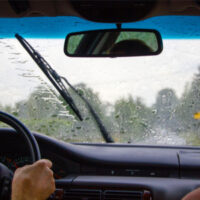Driving During Storms Can Be Dangerous

There are accidents every year due to bad weather. Storms can lead to heavy rain and hazardous driving conditions, including hydroplaning. Hydroplaning, also sometimes referred to as aquaplaning, is when the wheels of a car or truck lose traction on a road because the road surface is wet, flooded, or covered with oil.
After an accident, you need legal help to investigate the situation and move forward with a personal injury claim. After years of settling cases, the Baltimore car accident lawyers at Iamele & Iamele have the experience and resources to help personal injury victims.
Common Elements of Bad Weather Car Accidents
There are a variety of ways accidents occur, of course, but some bad weather accidents share common factors. Knowing these common elements can help drivers make safe driving choices.
- Brakes do not work well. If a car has breaks that are not working properly, it can make stopping difficult in the best of circumstances. Add wet conditions, and braking will be even more difficult.
- Wiper blades are not effective. When driving through the rain, visibility can be reduced. Wiper blades need to work as effectively as possible for drivers to see properly.
- Speeding or driving as if the weather is fine. In bad weather conditions, drivers need to slow down and travel at a safe speed. Speed limits refer to clear conditions.
- Tires do not have traction. Tires that are worn, either bald or with reduced thread, lead to drivers not having control of the vehicle.
Drivers need to execute good judgment to navigate the roads when conditions deteriorate. So, if a driver starts a journey when the weather is clear, they need to adjust their behaviors—slow down, pull over if needed—when a storm blows through.
Car Maintenance Leads to Safe Roads
Keeping up with vehicle maintenance is a way to stay safe on the roads no matter what the weather is and drivers will be especially appreciative of maintaining their vehicles when a storm hits. For example, you may not be thinking of your windshield wipers every day, but when you need them to work well when the rain starts.
Similarly, tires need to be thought of. Tires need to be inspected annually and after five years or so they will likely need to be replaced. How much a person drives can impact the life of a tire, but most professionals agree that 10 years is the maximum life for a tire. Tire lifespans can be extended with good maintenance, including keeping tires at the correct air pressure and having rotations performed, as needed.
If you are driving a vehicle and feel it starting to hydroplane, stay calm, slowly ease off the gas, apply pressure to the brake pedal and steer toward an area free of impact. And when weather is severe, pull over to a safe place and wait until driving conditions improve.
Have you been in an accident due to bad weather? Contact the legal team at Iamele & Iamele, LLP to be sure your rights are protected. Contact us today for a free initial consultation.
https://www.iamelelawfirmbaltimore.com/baltimore-car-crashes-and-subtle-injuries/

